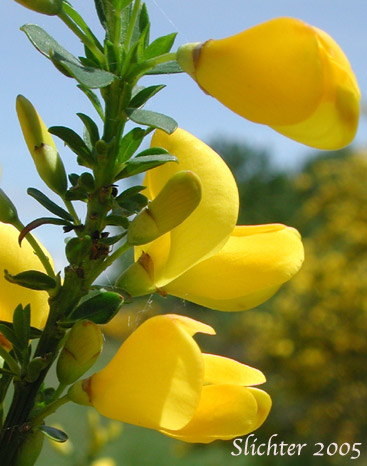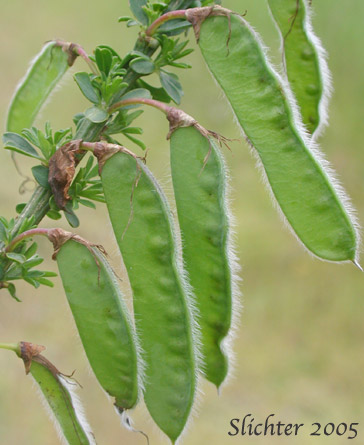

 The
photo at right shows the flattened pods of Scot's broom.
The
photo at right shows the flattened pods of Scot's broom.
Scot's broom is a low to medium height deciduous shrub with many branching stems attaining heights of 3 meters high. The smaller branches are longitudinally angled and nearly parallel to each other. The leaves are typically trifoliate on the lower stems but may bear only one leaflet high on the smaller branches.
Flowers are axillary (in the axils of old leaves) and found in clusters of 2-3. The corolla is bright yellow (often marked with orange or red) and measures from 18-22 mm long. The styles are longer than the keel and incurved. The fruits are flattened pods or legumes which are glabrous but lined with light, spreading hairs along the margins (as seen at right).
A weedy species, Scot's broom may be found in disturbed soils along highways, railroads, under powerlines and in waste areas, fallow fields, clearcuts and in openings along streams and rivers. Intolerant of shade, Scot's broom is limited to open areas.
An introduced European shrub that was often purposely planted along highways, Scot's broom has spread widely across the lowlands west of the Cascade Mts. from British Columbia south to California.
In the Columbia River Gorge, it may be found at various locations in the western Gorge.